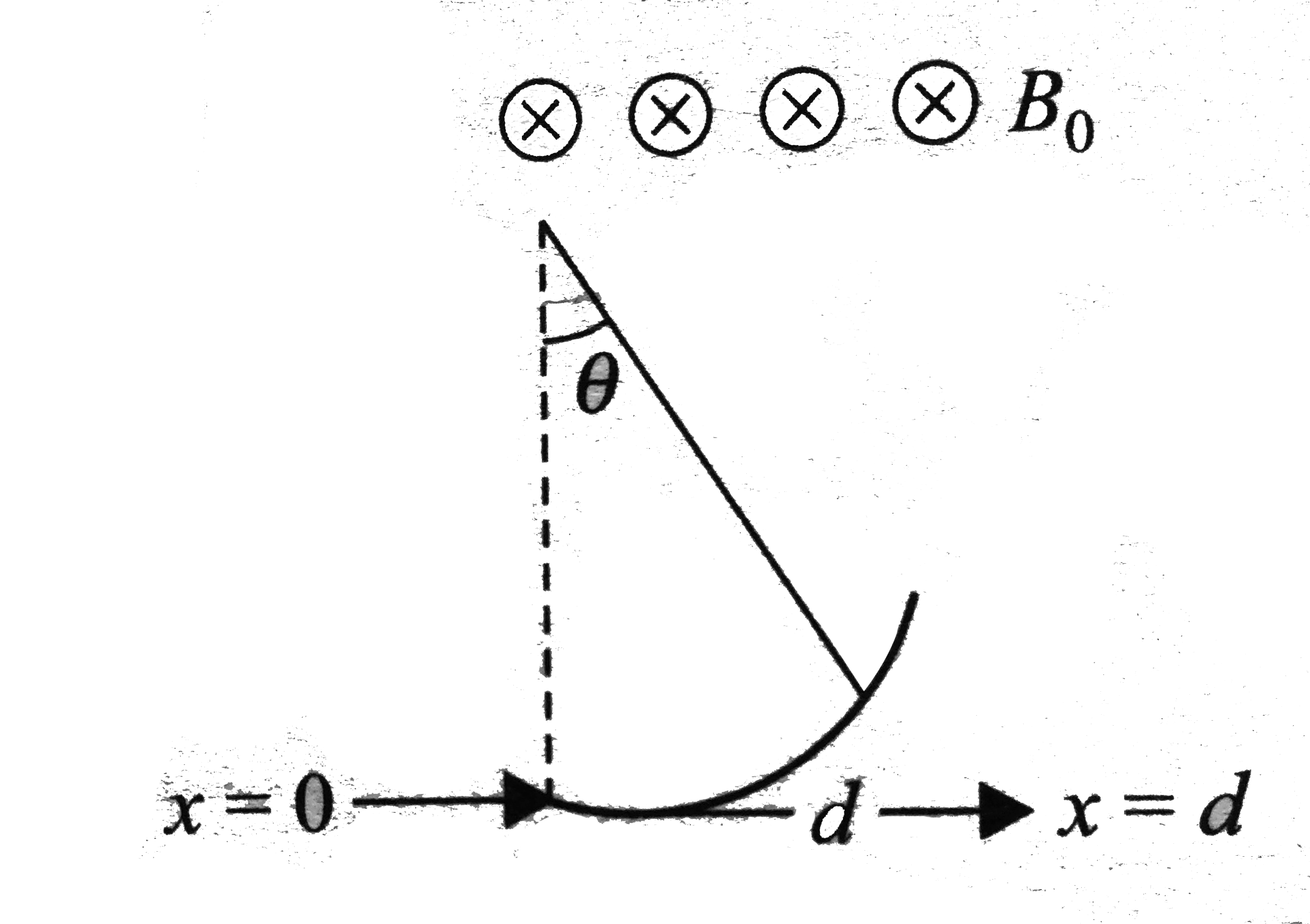Two charged particles traverse identical helical paths in a completely opposite sense in a uniform magnetic field →B=B0ˆK
They have equal z-components of momenta
They must have equal charges
They necessarily represent a particle-antiparticle pair
The charge to mass ratio satisfy:
(em)1+(em)2=0
The correct Answer is:D
In a uniform magnetic field, the two charged particles will traverse identical helical paths in a completely opposite sense if the charge/mass ratio of these two particles is same and charges on them are of opposite character. In this situation (e/m)1+(e/m)2=0, holds good.
Topper's Solved these Questions
- MAGNETIC EFFECT OF CURRENT AND MAGNETISMBOOK - PRADEEPCHAPTER - MAGNETIC EFFECT OF CURRENT AND MAGNETISMEXERCISE - Conceptual Problems (d)
2 Videos
- MAGNETIC EFFECT OF CURRENT AND MAGNETISMBOOK - PRADEEPCHAPTER - MAGNETIC EFFECT OF CURRENT AND MAGNETISMEXERCISE - Very Short Answer Questions (a)
2 Videos
- ELECTROSTATICSBOOK - PRADEEPCHAPTER - ELECTROSTATICSEXERCISE - ASSERTION-REASON TYPE QUESTIONS
2 Videos
- OPTICSBOOK - PRADEEPCHAPTER - OPTICSEXERCISE - Multiple choice questions
1 Videos
Similar Questions
What will be the path of a charged particle moving perpendicular to a uniform magnetic field?
View SolutionA charged particle with charge to mass ratio (qm)=(10)319Ckg−1 enters a uniform magnetic field →B=20ˆi+30ˆj+50ˆkT at time t = 0 with velocity →V=(20ˆi+50ˆj+30ˆk)m/s. Assume that magnetic field exists in large space.
The pitch of the helical path of the motion of the particle will be
View Solution
Knowledge Check
Two charged particles traverse identical helical paths in a completely opposite sense in a uniform magnetic field →B=B0ˆK
AThey have equal z-components of momentaBThey must have equal chargesCThey necessarily represent a particle-antiparticle pairDThe charge to mass ratio satisfy:
(em)1+(em)2=0A charged particle moving along +ve x-direction with a velocity v enters a region where there is a uniform magnetic field B0(−ˆk),omx=0→x=d. The particle gets deflected at an angle θ from its initial path. The specific charge of the particle is
 AvcosθBdBvtanθBdCvBdDvsinθBd
AvcosθBdBvtanθBdCvBdDvsinθBdThe path of a charged particle moving in a uniform steady magnetic field cannot be a
Astraight lineBcircleCparabolasDnone of these
A charged particle with charge to mass ratio (qm)=(10)319Ckg−1 enters a uniform magnetic field →B=20ˆi+30ˆj+50ˆkT at time t = 0 with velocity →V=(20ˆi+50ˆj+30ˆk)m/s. Assume that magnetic field exists in large space.
During the further motion of the particle in the magnetic field, the angle between the magnetic field and velocity of the particle
View SolutionA charged particle with charge to mass ratio (qm)=(10)319Ckg−1 enters a uniform magnetic field →B=20ˆi+30ˆj+50ˆkT at time t = 0 with velocity →V=(20ˆi+50ˆj+30ˆk)m/s. Assume that magnetic field exists in large space.
The frequency (in Hz) of the revolution of the particle in cycles per second will be
View SolutionA charged particle (q.m) released from origin with velocity v=v0ˆi in a uniform magnetic field B=B02ˆi+√3B02ˆJ.
Pitch of the helical path described by the particle is
View SolutionThe radius of curvature of the path of a charged particle moving in a static uniform magnetic field is
View SolutionThe radius of curvature of the path of a charged particle moving in a static uniform magnetic field is
View Solution
